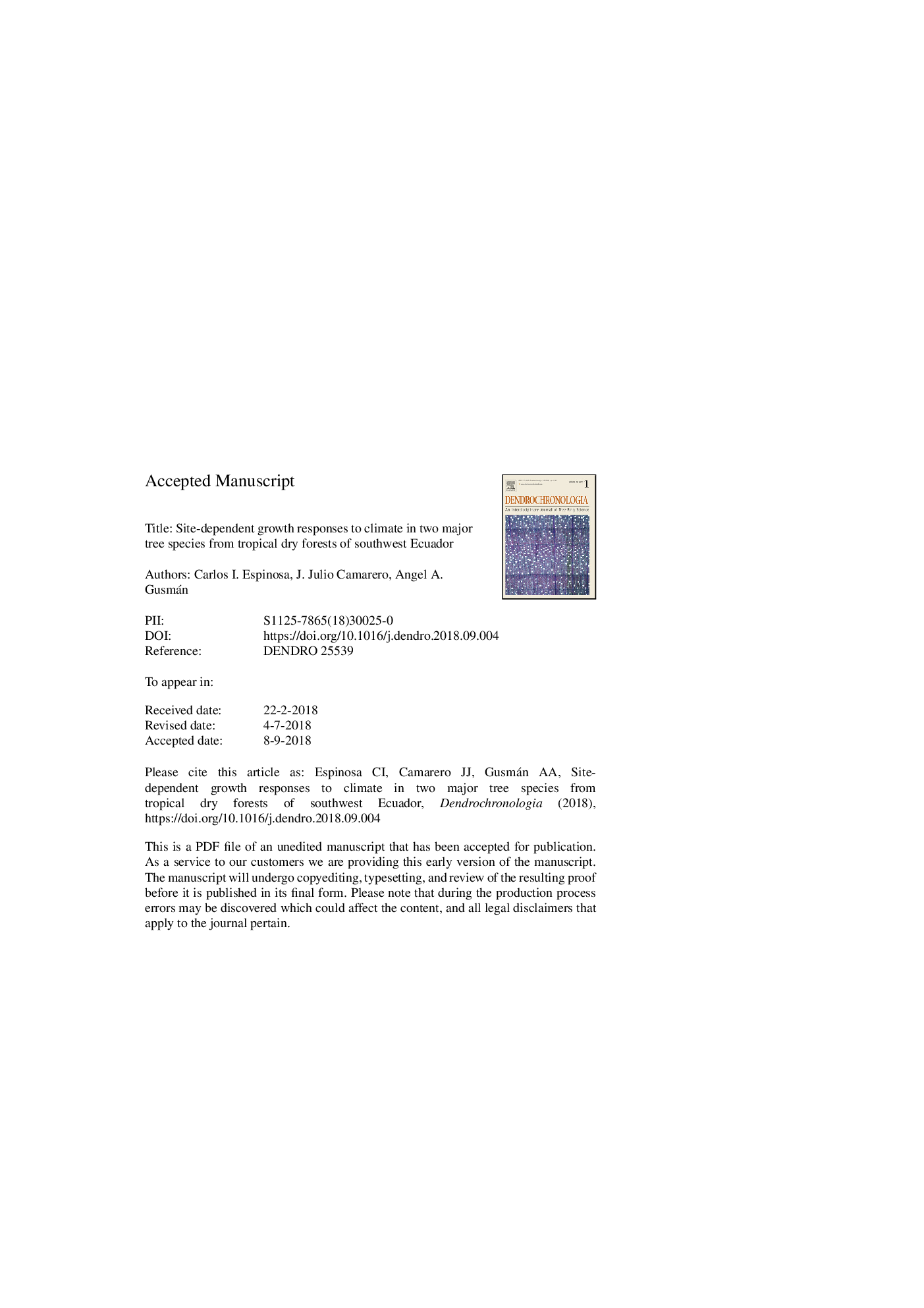| Article ID | Journal | Published Year | Pages | File Type |
|---|---|---|---|---|
| 10224966 | Dendrochronologia | 2018 | 32 Pages |
Abstract
Tropical dry forests (hereafter TDFs) have been extensively logged and converted into croplands or grasslands worldwide. Tumbesian forests in southwest Ecuador are among the most diverse and endangered TDFs. They face seasonal droughts of varied severity and are also subjected to episodic very wet and cloudy conditions during El Niño events. However, we lack a local quantification of their responses to regional climate (temperature, precipitation, cloud cover) and El Niño which could change across sites. Here we use dendrochronology to quantify the radial-growth rates and the responses to climate (mean temperatures, precipitation amount, cloud cover and drought severity) of two major tree species forming annual rings (Geoffroea spinosa, Handroanthus chrysanthus) in three TDFs with different local climate conditions. The lowest (1.0âmm yrâ1) and the highest (2.1âmm yrâ1) radial-growth rates of both tree species were found in the hottest-driest and moderately hot sites, respectively. G. spinosa growth responded positively to wet, cool and cloudy conditions in the hottest-driest and moderately hot sites, but the most intense response to drought was observed in the driest site at 1-5 months long scales. H. chrysanthus growth reacted positively to high growing-season precipitation in all sites, particularly in the driest site, and to cloudy conditions in moderately hot sites. The growth of H. chrysanthus was negatively associated to the Southern Oscillation Index in the dry-hot and in the moderately hot sites. Tree species coexisting in TDFs show varied growth responses to regional weather variability, drought severity and El Niño events across sites with different local climate conditions.
Keywords
Related Topics
Physical Sciences and Engineering
Earth and Planetary Sciences
Atmospheric Science
Authors
Carlos I. Espinosa, J. Julio Camarero, Angel A. Gusmán,
